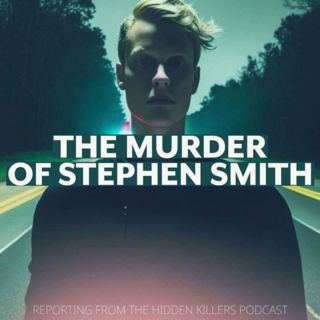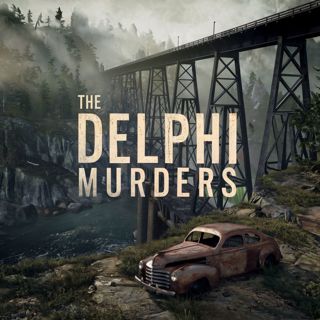
Inside Stephen Smith’s Death — Beyond the Murdaugh Rumors
The death of 19-year-old nursing student Stephen Smith has haunted South Carolina for nearly a decade — but with new national attention from the Hulu Murdaugh series, the truth about what happened to him is finally back in the spotlight. In tonight’s Hidden Killers deep-dive, Tony Brueski breaks down the real story behind the case: the strange crime scene, the contradictions in early investigative reports, the forensic inconsistencies that never should’ve been ignored, and the long-buried leads that investigators are only now pursuing. We walk through Stephen’s final night, the discovery of his body on a remote rural road, and the major red flags that made troopers question the hit-and-run narrative from day one. We also address — directly and responsibly — the long-circulating rumors involving the Murdaugh name, explaining what was speculation, what investigators actually found, and why SLED says there is no evidence tying the family to Stephen’s death. More importantly, we highlight the real investigative leads resurfacing today: individuals who made suspicious statements in 2015, inconsistencies in witness accounts, and the newly reclassified finding that Stephen’s death was a homicide, not an accident. With a grand jury working behind the scenes and national pressure mounting, the case is closer to answers than it has ever been. Stephen Smith was more than a rumor in a small Southern county. He was a son, a brother, a friend — a teenager with dreams of becoming a nurse — and someone out there knows exactly what happened to him. If you’re here for real reporting, grounded analysis, and a breakdown that cuts through the noise, you’re in the right place. Subscribe for continuing coverage of the Stephen Smith investigation, Murdaugh updates, and the biggest cases shaping the true-crime world today. #StephenSmith #MurdaughCase #TrueCrime #HiddenKillers #JusticeForStephen #SouthCarolinaCrime #ColdCase #Investigation #TonyBrueski #TrueCrimeCommunity Want to comment and watch this podcast as a video? Check out our YouTube Channel. https://www.youtube.com/@hiddenkillerspod Instagram https://www.instagram.com/hiddenkillerspod/ Facebook https://www.facebook.com/hiddenkillerspod/ Tik-Tok https://www.tiktok.com/@hiddenkillerspod X Twitter https://x.com/tonybpod Listen Ad-Free On Apple Podcasts Here: https://podcasts.apple.com/us/podcast/true-crime-today-premium-plus-ad-free-advance-episode/id1705422872
24 Marras 15min

Why Institutions Freeze — Ret FBI Robin Dreeke on Bryan Kohberger's WSU Red Flags
Tonight on Hidden Killers Live, we’re taking on the uncomfortable truth institutions hate facing: sometimes the danger is right in front of them, but the structure, culture, and psychology of the environment keep anyone from calling it what it is. Retired FBI Special Agent Robin Dreeke joins us to break down how those blind spots cost Washington State University crucial opportunities to intervene. This episode digs into the behavioral complaints that circulated inside WSU long before any crime occurred: the staring, the hovering, the boundary-breaking, the fear expressed by women in the department. These weren’t isolated incidents. They were a pattern. And patterns matter. Robin explains why institutions tend to frame patterned discomfort as a paperwork problem instead of a risk-behavior problem — and why that distinction is everything. Graduate programs rely heavily on autonomy, hierarchy, and informal power dynamics. When the person generating concern holds influence over students, especially women, the risk isn’t hypothetical. It’s structural. We examine why institutions minimize threat signals: fear of liability, fear of mislabeling someone, fear of overreacting, fear of confronting what they don’t want to acknowledge. Stacy joins with psychological insight into why women's instincts responded before anyone had the “official language” to describe what was wrong. Then we explore what was missing at WSU — not actions, but training. Why were faculty unprepared to identify patterned risk? Why did warnings get siloed instead of escalated? Why did a mandatory meeting produce no meaningful change? And what could have been done differently from the moment the first complaints surfaced? This isn’t about hindsight. It’s about understanding systemic blind spots so they aren’t repeated. For anyone trying to understand the line between unusual behavior and genuine threat, this conversation is a must-watch. #HiddenKillers #WSU #RobinDreeke #ThreatAssessment #CampusWarnings #BehavioralPatterns #TrueCrimeLivestream #TonyBrueski #RedFlags #InstitutionalFailure Want to comment and watch this podcast as a video? Check out our YouTube Channel. https://www.youtube.com/@hiddenkillerspod Instagram https://www.instagram.com/hiddenkillerspod/ Facebook https://www.facebook.com/hiddenkillerspod/ Tik-Tok https://www.tiktok.com/@hiddenkillerspod X Twitter https://x.com/tonybpod Listen Ad-Free On Apple Podcasts Here: https://podcasts.apple.com/us/podcast/true-crime-today-premium-plus-ad-free-advance-episode/id1705422872
24 Marras 49min

What’s Left of Brian Walshe’s Defense After His Bombshell Plea-WEEK IN REVIEW
Brian Walshe’s courtroom strategy just blew apart. When he stood in front of a judge and admitted — in his own voice — that he willfully conveyed Ana Walshe’s remains and misled investigators, he didn’t just plead guilty to two charges. He detonated the core of the defense narrative he’s been hiding behind for nearly two years. Now he’s walking into a murder trial without the one thing most defendants in no-body cases cling to: deniability. In this episode of Hidden Killers, we break down exactly how this guilty plea changes the entire trajectory of the trial and what it leaves his defense team scrambling to do next. Because once you admit that you touched the remains, once you admit you interfered with the investigation, once you admit you contributed to evidence being destroyed, you’re no longer arguing about whether you were involved. You’re arguing about how deep that involvement goes. So what does Brian Walshe have left? What does a defense look like when you’ve already admitted to actions that most jurors see as the behavior of someone with something enormous to hide? We examine the only narrative his team has left: the idea that Ana’s death was not murder, that something happened suddenly or unexpectedly, and that Brian spiraled into panic and made disastrous choices afterward. It’s a narrow road — one that has to compete with a mountain of digital searches, forensic findings, surveillance footage, and behavior prosecutors say lay out a chilling timeline. This episode digs into the strategies the defense is likely to deploy, how they’ll try to reinterpret the incriminating searches, how they’ll frame his mental state, and why they may try to turn the guilty plea itself into proof of honesty rather than guilt. With the trial about to begin, and with 70 potential jurors being questioned, this case is entering a new phase — one where the stakes for Brian Walshe couldn’t be higher, and his room to maneuver couldn’t be smaller. Subscribe for daily trial coverage, expert analysis, and every major update as it happens. #BrianWalshe #AnaWalshe #HiddenKillers #TrueCrimeToday #TrueCrimeUpdates #CourtCase #TrialCoverage #JusticeSystem #LegalAnalysis #TrueCrimeCommunity Want to comment and watch this podcast as a video? Check out our YouTube Channel. https://www.youtube.com/@hiddenkillerspod Instagram https://www.instagram.com/hiddenkillerspod/ Facebook https://www.facebook.com/hiddenkillerspod/ Tik-Tok https://www.tiktok.com/@hiddenkillerspod X Twitter https://x.com/tonybpod Listen Ad-Free On Apple Podcasts Here: https://podcasts.apple.com/us/podcast/true-crime-today-premium-plus-ad-free-advance-episode/id1705422872
24 Marras 13min

Holeman’s Testimony EXPOSES How Badly Delphi Was Investigated-WEEK IN REVIEW
In today’s episode, we take a hard, relentless look at Lieutenant Jerry Holeman’s testimony in the Delphi murders case — and what it reveals about the investigation that led to the conviction of Richard Allen. This isn’t speculation. This isn’t rumor. This is straight from the sworn record: the contradictions, the assumptions, the missing analysis, and the investigative gaps that no one watching the press conferences ever got to see. Holeman was positioned as one of the state’s anchors — a senior Indiana State Police investigator expected to bring clarity and confidence to a deeply complex double-homicide case. Instead, his testimony exposes just how shaky the investigative foundation really was. Sticks placed on the bodies of Abby and Libby were dismissed as “camouflage,” even though they concealed nothing. Then, suddenly, the state floated a psychological term — “undoing” — that had never appeared in the investigative record, and Holman endorsed it without hesitation. His certainty about a “single offender” wasn’t based on forensic proof. It came from a belief he stated on the stand: that in multi-offender crimes, “someone usually talks.” Yet the case file contains exactly that — a suspect making disturbing comments investigators inexplicably labeled “no further action.” We dive into everything Holman didn’t explain: why symbolic elements were barely analyzed, why alternative suspects weren’t vetted, why forensic opportunities were missed, why the bullet lacked field documentation, why major investigative questions were replaced with assumptions, and why his testimony often stood in open conflict with other investigators on essential questions like the FBI’s role. This isn’t about guilt or innocence. It’s about whether the investigation that shaped the entire Delphi narrative was thorough, consistent, or grounded in evidence. And Holman’s testimony makes it undeniably clear: the holes aren’t small. They’re foundational. If you care about the truth in Delphi, this breakdown matters. #Delphi #DelphiCase #TrueCrime #RichardAllen #InvestigativeAnalysis #HolemanTestimony #CourtRecord #JusticeSystem #HiddenKillers #TrueCrimeCommunity Want to comment and watch this podcast as a video? Check out our YouTube Channel. https://www.youtube.com/@hiddenkillerspod Instagram https://www.instagram.com/hiddenkillerspod/ Facebook https://www.facebook.com/hiddenkillerspod/ Tik-Tok https://www.tiktok.com/@hiddenkillerspod X Twitter https://x.com/tonybpod Listen Ad-Free On Apple Podcasts Here: https://podcasts.apple.com/us/podcast/true-crime-today-premium-plus-ad-free-advance-episode/id1705422872
23 Marras 19min

Why Institutions Freeze — Ret FBI Robin Dreeke on Bryan Kohberger's WSU Red Flags-WEEK IN REVIEW
Tonight on Hidden Killers Live, we’re taking on the uncomfortable truth institutions hate facing: sometimes the danger is right in front of them, but the structure, culture, and psychology of the environment keep anyone from calling it what it is. Retired FBI Special Agent Robin Dreeke joins us to break down how those blind spots cost Washington State University crucial opportunities to intervene. This episode digs into the behavioral complaints that circulated inside WSU long before any crime occurred: the staring, the hovering, the boundary-breaking, the fear expressed by women in the department. These weren’t isolated incidents. They were a pattern. And patterns matter. Robin explains why institutions tend to frame patterned discomfort as a paperwork problem instead of a risk-behavior problem — and why that distinction is everything. Graduate programs rely heavily on autonomy, hierarchy, and informal power dynamics. When the person generating concern holds influence over students, especially women, the risk isn’t hypothetical. It’s structural. We examine why institutions minimize threat signals: fear of liability, fear of mislabeling someone, fear of overreacting, fear of confronting what they don’t want to acknowledge. Stacy joins with psychological insight into why women's instincts responded before anyone had the “official language” to describe what was wrong. Then we explore what was missing at WSU — not actions, but training. Why were faculty unprepared to identify patterned risk? Why did warnings get siloed instead of escalated? Why did a mandatory meeting produce no meaningful change? And what could have been done differently from the moment the first complaints surfaced? This isn’t about hindsight. It’s about understanding systemic blind spots so they aren’t repeated. For anyone trying to understand the line between unusual behavior and genuine threat, this conversation is a must-watch. #HiddenKillers #WSU #RobinDreeke #ThreatAssessment #CampusWarnings #BehavioralPatterns #TrueCrimeLivestream #TonyBrueski #RedFlags #InstitutionalFailure Want to comment and watch this podcast as a video? Check out our YouTube Channel. https://www.youtube.com/@hiddenkillerspod Instagram https://www.instagram.com/hiddenkillerspod/ Facebook https://www.facebook.com/hiddenkillerspod/ Tik-Tok https://www.tiktok.com/@hiddenkillerspod X Twitter https://x.com/tonybpod Listen Ad-Free On Apple Podcasts Here: https://podcasts.apple.com/us/podcast/true-crime-today-premium-plus-ad-free-advance-episode/id1705422872
23 Marras 49min

New Kohberger Lawsuit Blows Open New Questions - Did WSU IGNORE RED FLAGS?-WEEK IN REVIEW
Tonight on Hidden Killers, we’re diving into the lawsuit that could finally crack open the one part of the Bryan Kohberger story that’s been sealed tight: what Washington State University actually knew about his behavior before the Idaho killings — and what they did or didn’t do with it. The Goncalves family has officially taken the first major step toward suing WSU, and the claims are explosive. They’re arguing that the university wasn’t just a backdrop in Kohberger’s life — it was an institution with warnings stacking up in its hallways, complaints piling on desks, and a growing chorus of women saying the same thing: this man made them feel unsafe. We now know multiple WSU faculty and graduate students reported Kohberger for intimidating conduct, blocking doorways, staring silently at women, hovering over desks, following people to their cars, and violating boundaries over and over. Some were so scared they asked for escorts at the end of the day. Others filed formal discrimination and harassment complaints. One professor even told colleagues she feared he’d go on to harm students someday. And still — he remained in the program. Still teaching. Still representing the university. Still in university housing. Still collecting a paycheck. The lawsuit argues that WSU had enough information to intervene long before Kohberger ever crossed into Idaho. Not because anyone predicted the crime — but because institutions have a duty to respond to patterns of harassment, intimidation, and escalating hostility. The families want answers, and they want every internal document: every HR complaint, every faculty meeting, every email where someone said, “Something is wrong with this guy.” This case could reshape how universities handle red-flag students and employees. It could expose just how close institutions sometimes get to danger without ever stepping in. And it could finally tell these families whether the system that surrounded Kohberger ever tried to stop what so many people felt happening right in front of them. Join me as we break down what this lawsuit means, what the families are fighting for, and why the truth matters now more than ever. #HiddenKillers #BryanKohberger #WSU #KohbergerCase #TrueCrime #IdahoCase #KayleeGoncalves #MoscowMurders #JusticeForTheVictims #TrueCrimeCommunity Want to comment and watch this podcast as a video? Check out our YouTube Channel. https://www.youtube.com/@hiddenkillerspod Instagram https://www.instagram.com/hiddenkillerspod/ Facebook https://www.facebook.com/hiddenkillerspod/ Tik-Tok https://www.tiktok.com/@hiddenkillerspod X Twitter https://x.com/tonybpod Listen Ad-Free On Apple Podcasts Here: https://podcasts.apple.com/us/podcast/true-crime-today-premium-plus-ad-free-advance-episode/id1705422872
23 Marras 14min

Two Cases Just Shifted — Brian Walshe’s Plea Flip & WSU Under Kohberger Fallout Fire
Two major true-crime cases just took sharp, unexpected turns — one in the courtroom, one in the civil arena. First, Brian Walshe blindsided the court by pleading guilty to disposing of Ana Walshe’s remains and misleading investigators — but still maintaining he didn’t kill her. It’s a move that redefines the entire murder trial and forces huge strategic shifts for both sides. Then, across the country, Washington State University is facing legal heat. The Goncalves family has filed a civil claim arguing WSU ignored repeated warnings about Brian Kohberger before the Moscow murders. More than a dozen complaints. A professor calling him a future predator. Students saying they felt trapped and unsafe. The question now is simple: Does the law say the university should have done more? On today’s episode of Hidden Killers, Tony Brueski sits down with legal analyst Eric Faddis to break down both cases: • Why did Walshe plead guilty to these charges but not murder? • Does this strengthen the prosecution’s theory — or hand the defense a new angle? • What does the jury hear now, and how will it shape perception? • And in the WSU civil case — what duty does a university owe? • What evidence matters most? • Does foreseeability apply when the crime occurred off-campus at another school? • And is the real goal here discovery — forcing WSU’s internal files out into the light? Two cases. Two seismic shifts. One conversation that lays out the stakes, the law, and the fallout. #HiddenKillers #TrueCrime #BrianWalshe #BryanKohberger #WSU Want to comment and watch this podcast as a video? Check out our YouTube Channel. https://www.youtube.com/@hiddenkillerspod Instagram https://www.instagram.com/hiddenkillerspod/ Facebook https://www.facebook.com/hiddenkillerspod/ Tik-Tok https://www.tiktok.com/@hiddenkillerspod X Twitter https://x.com/tonybpod Listen Ad-Free On Apple Podcasts Here: https://podcasts.apple.com/us/podcast/true-crime-today-premium-plus-ad-free-advance-episode/id1705422872
23 Marras 54min






















